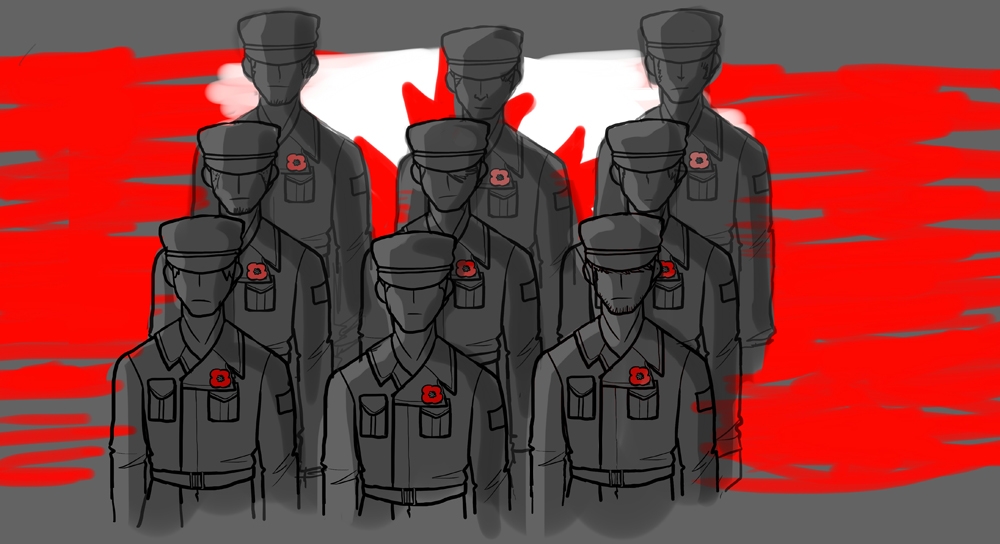Golnaz Taherian | Contributor
Featured illustration: Much of the beauty of wartime poems comes from the fact that soldiers were simply documenting the world around them and what they thought. | Jasmine Wiradharma
Poetry is a spiritual gift that connects people universally. Writing poetry about Remembrance Day is one way to honour the sacrifices of heroes forever. Families who have lost loved ones can preserve their memories in objects, pictures and belongings, but don’t have the same effect on the general public that may not know them personally. Some photos of Canadian soldiers in trenches, combat or camaraderie don’t require words. The sombre, tense or intimate photos convey what it was like to be a soldier in World War I. However, for those soldiers, volunteers and doctors whose photos have not become parts of popular galleries, exhibits or books, poems can convey the global effect of those heroes.
Poetry is that moving language that depicts unimaginable scenes for people all around the world, especially when it comes to the horrors and exploits of WWI. “In Flanders Fields” and “Dulce et Decorum Est” are more than just the beautiful ponderings of a doctor and a soldier. They are testaments to the horrors and injustices we are capable of committing as humans.
These heroes are appreciated by different nations through poetry since it shows people of the world far beyond the frozen moments of a photo. Soldiers of WWI fought not only for their families, but for their nations and the following generations. Remembering them does not require knowing them personally, it requires comprehending their deeds. Poetry inspired by Remembrance Day or written from firsthand experiences of the war is important because it pays tribute to the sacrifices of these soldiers and makes sure that they live on beyond death.
The symbol of the red poppy functions as a memorialization of Canadian soldiers. The most common way to interpret the red poppy is considering it as a symbol of blood and remembrance. After soldiers died in Flanders Fields, red poppies grew on their corpses and filled Ypres.
There are two ways to understand this scene. Either the heroes died and turned to ashes, and in return for their sacrifices, these red poppies decorated their graves and figuratively transformed their dust into art. Or, flowers represent the change of the nation from a black and white world of the battlefield to the red world of flowers.
It is astonishing that red poppies grew on the graveyard and created art. It suggests that something beautiful and good can come from needless suffering and pain. The heroes have influenced this epic art by transforming the nation that was painted by blood to a nation that has been painted by peace. Epic actions deserve epic appreciations.
Recalling these heroes only one day a year is not enough because their sacrifices deserve to be admired, remembered and mentioned more than once a year. November 11 will come and go, but poems about Remembrance Day will always remain and create permanent art.

